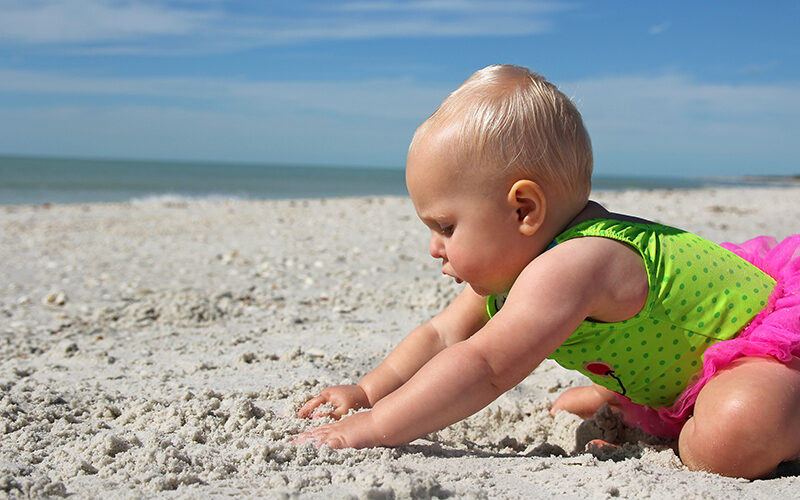If you make soap or cosmetics, you’ve probably seen posts or recipes claiming a “natural sunscreen” or an “SPF lotion” made with coconut oil, shea butter, or zinc oxide. It’s an appealing idea—after all, we all want to protect our skin naturally.
But here’s the truth: Sunscreen is an over-the-counter drug, with very specific ingredient, testing, and manufacturing requirements. And it’s not possible to meet those requirements as a handcrafter.
Sunscreens Are Regulated as OTC Drugs
In the United States, sunscreen products are over-the-counter (OTC) drugs. That means they’re not just cosmetics—they’re intended to prevent sunburn or protect the skin from UV damage, which is a medical (drug) claim.
The FDA regulates sunscreens under the OTC Sunscreen Monograph (M020). The monograph details:
- Exactly which active ingredients can be used (for example, zinc oxide, titanium dioxide, avobenzone, etc.).
- Permitted concentrations for each ingredient.
- Required testing for SPF value and broad-spectrum protection.
- Specific labeling requirements, including Drug Facts labeling.
If a product claims to provide any level of SPF or sun protection, it automatically falls under these drug regulations—there are no exceptions for small businesses or handmade products.
Approved Ingredients
These are the only ingredients that are currently approved for use in sunscreens in the US:
| Ingredient | Max % | Notes |
|---|---|---|
| Aminobenzoic acid (PABA) | 15% | Rarely used now due to irritation issues |
| Avobenzone | 3% | UVA absorber |
| Cinoxate | 3% | UVB absorber |
| Dioxybenzone | 3% | Broad UV absorber |
| Ensulizole (Phenylbenzimidazole sulfonic acid) | 4% | Water-soluble UVB absorber |
| Homosalate | 15% | Common UVB filter |
| Meradimate (Menthyl anthranilate) | 5% | UVA filter |
| Octinoxate (Octyl methoxycinnamate) | 7.5% | UVB absorber |
| Octisalate (Octyl salicylate) | 5% | UVB filter |
| Octocrylene | 10% | Broad UV absorber, stabilizer for avobenzone |
| Oxybenzone | 6% | UVB/UVA II filter |
| Padimate O | 8% | UVB filter |
| Sulisobenzone | 10% | UVB/UVA II filter |
| Titanium dioxide | 25% | Physical (mineral) blocker |
| Trolamine salicylate | 12% | UVB filter |
| Zinc oxide | 25% | Physical (mineral) blocker |
There are a few other sunscreens approved in other countries, and there is a move to update the sunscreen active ingredients in the US, but for now, these are the only ones allowed.
“Natural” Sunscreen
It’s true that there are natural ingredients that provide a limited degree of sun (UV) protection. I’ve heard claims that shea butter and tallow both provide a little bit of UV protection. Neither are approved as active ingredients for use in sunscreens.
Zinc oxide and titanium dioxide are readily available, and they are approved as active ingredients in sunscreen (at 25% or more). (Remember that thick white paste lifeguards used to smear on their noses?) However, the ability to stably blend them into a cream or lotion so they are adequately dispersed to provide actual sun protection requires skilled manufacturing. And the only way to know for sure that it works is testing. But again, even if you could make it and it tested out, you’d still need an approved facility in which to manufacture it, where all drug-level good manufacturing practices were in place.
That said, there are some valid products on the market that meet all those requirements… they just aren’t made by handcrafters.
False and Misleading Examples
A search of the web shows up products that are marketed as “sunscreen” and even claim various levels of SPF… but they don’t meet the monograph standards. Not only are they illegal, unapproved drugs, they pose a threat to those who use them because they aren’t getting the actual protection they need.
I’m one of those people who go out in the sun for 30 minutes and come in looking like a boiled lobster. I can’t count the number of times I was roasted and toasted at the beach as a kid. The level of SPF is not just a “good idea” for me, it’s an imperative. A product that claims an SPF level that it doesn’t actually have is not just misleading—it’s dangerous.
Required Warnings On Tanning Products Without Sunscreen
There is such a thing as a “sun tanning preparation.” Those are creams or lotions that are intended to provide a cosmetic effect on the skin (such as moisturizing or conditioning) while tanning, but which DO NOT contain a sunscreen.
Because consumers generally use those products at the beach or while tanning, those products have a mandatory warning that must be on the package:
Warning: This product does not contain a sunscreen and does not protect against sunburn. Repeated exposure of unprotected skin while tanning may increase the risk of skin aging, skin cancer, and other harmful effects to the skin even if you do not burn.
It gives you an idea of the importance of accurate and truthful labeling of cosmetic products that are—or are not—sunscreens.
The Bottom Line
The requirements for making and testing sunscreens are outside the capability of a handcrafter. Not only does it require equipment and expertise that are generally beyond a handcrafter’s skillset, but the manufacturing must be carried out in a facility approved to manufacture drugs and which follows the good manufacturing practices required for drug manufacturing. Again, that’s far beyond what’s possible for most handcrafted soap and cosmetic makers.
If you make soap, lotion, or cosmetics:
- You cannot market a product as sunscreen, sunblock, or SPF-rated without full compliance with FDA drug manufacturing and testing requirements.
- You cannot infer or claim SPF or sun protection from ingredients; only an approved sunscreen can claim an SPF level
- You must include a warning if you are promoting your product for use while tanning and it is not a valid sunscreen—regardless of the benefits of any individual ingredients.
There’s nothing wrong with promoting your products as moisturizing, soothing, or protective in the everyday sense—just steer clear of sun protection claims unless you’re prepared to meet the full drug standards.


Leave a Reply